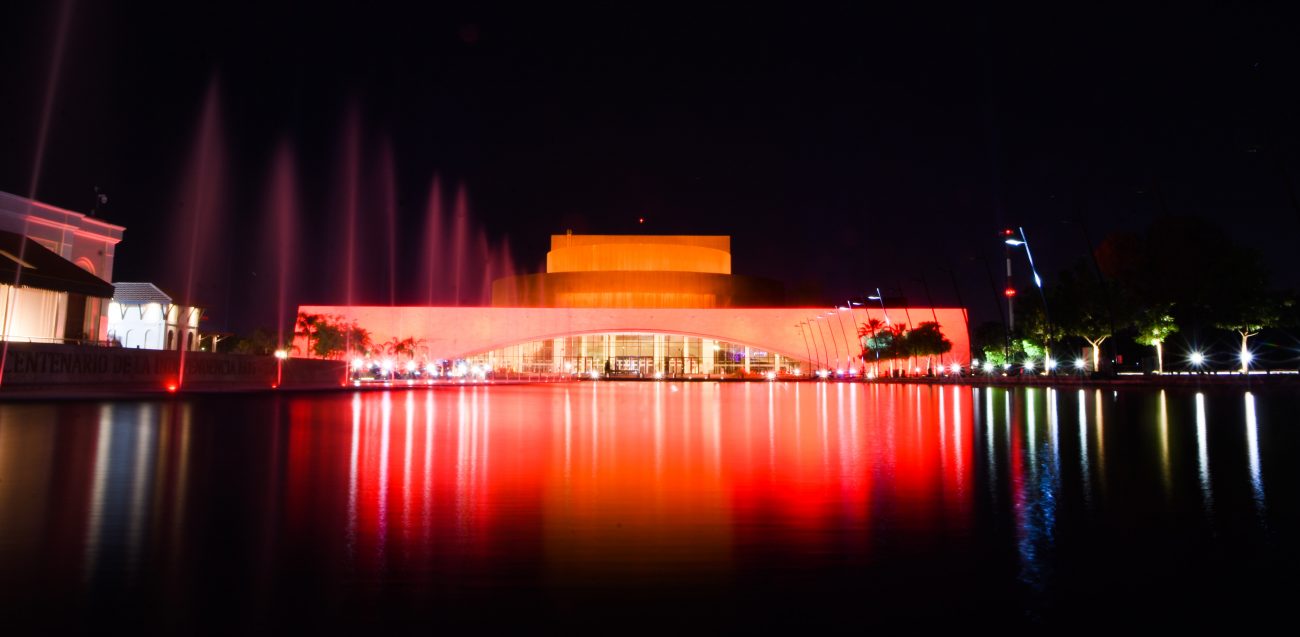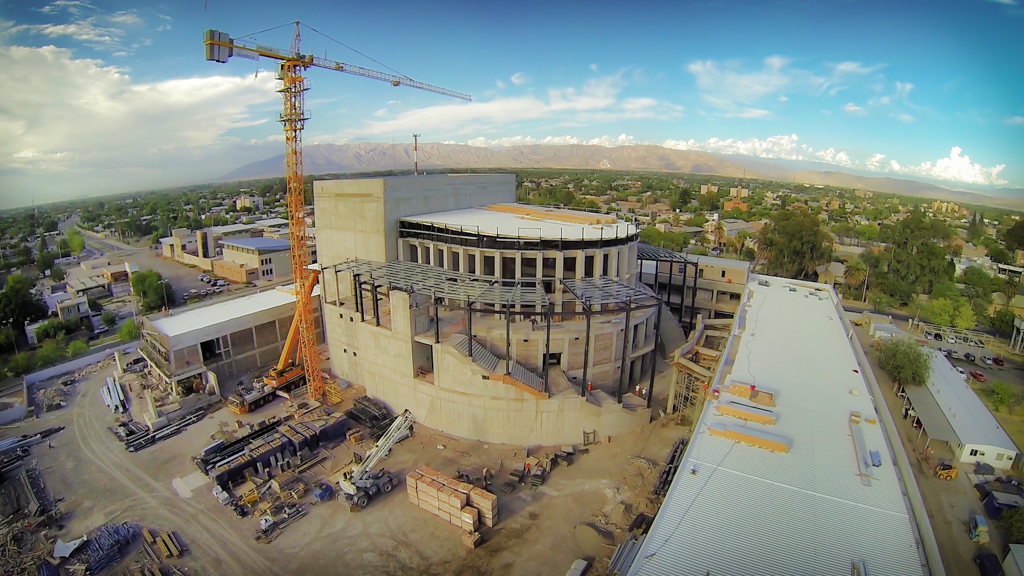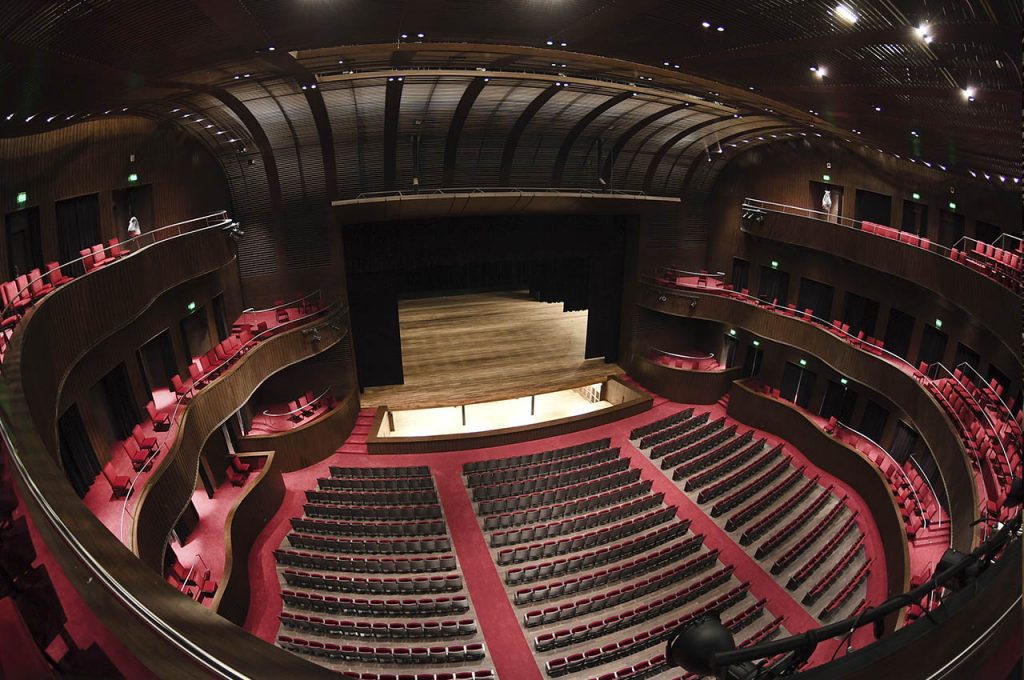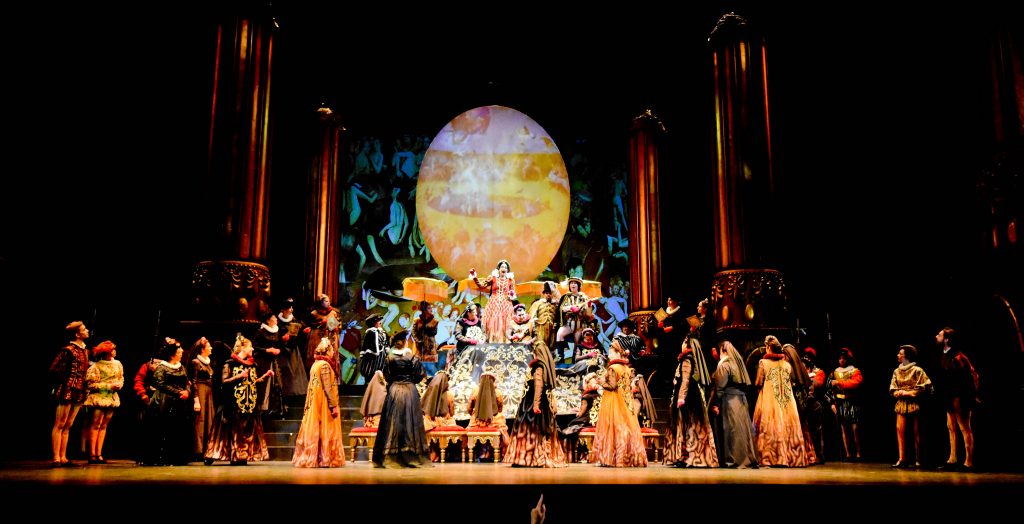Teatro del Bicentenario de San Juan, un orgullo sanjuanino

Llega junio y comenzamos la mitad del año con la nueva sección “Teatro del Mes”. Aquí buscamos dar a conocer la historia, el patrimonio arquitectónico, las anécdotas y algunos datos curiosos acerca de los diferentes teatros que conforman la red OLA.
En la primera entrega de la sección «Teatro del Mes» queremos destacar al Teatro del Bicentenario San Juan, uno de los espacios culturales más significativos y modernos de Argentina. Es un imponente edificio donde confluyen tradición y modernidad, espectáculos clásicos y contemporáneos, y una dedicada vocación por promover y levantar la escena sanjuanina de las artes escénicas.

Los arquitectos a cargo de la obra, Guillermo Velazco y Jorge López, buscaron diseñar un edificio “para la integración ciudadana con una fuerte identidad institucional y regional que es al mismo tiempo monumento y paisaje”. Foto: Gentileza Teatro del Bicentenario de San Juan
HISTORIA
Fue un viernes 21 de octubre, en 2016, el día escogido para inaugurar el Teatro del Bicentenario. El estreno fue una deslumbrante gran gala que comenzó inmediatamente con una presentación épica y cargada de potencia lírica y musical: la obra “Carmina Burana” (1937), de Carl Orff. La función hizo lucir a las diferentes compañías corales de la provincia sanjuanina, acompañadas por la Orquesta Sinfónica de la Universidad Nacional de San Juan y la dirección del maestro suizo Emanuel Siffert.
No solo la selección musical del programa fue formidable. La puesta en escena estuvo a cargo de la compañía española La Fura dels Baus. La intensidad de la escenificación, propia del estilo de “La Fura”, presentó una carga de experimentación estética y simbolismos, un espectáculo de colores e imágenes espirituales.
El teatro está emplazado entre las avenidas España, Las Heras, Córdoba e Ignacio de la Roza. Pero no es cualquier cuadra; la zona representa un lugar de importante valor histórico-patrimonial para los sanjuaninos. Allí se ubica la ex Estación San Martín, construida originalmente en 1855 y todo un ícono de las primeras épocas de San Juan, en donde se mantiene viva la memoria del paso del tren y su legado como un punto de reunión y ajetreo en la vida social moderna.
ARQUITECTURA
Estamos en el recinto que alberga al “Bicentenario de San Juan”. Un enorme espejo de agua se extiende frente a este edificio de característico estilo posmodernista.
Los arquitectos Guillermo Velazco y Jorge López trabajaron desde el día uno para diseñar y emplazar el teatro. Ambos de origen sanjuanino, apostaron por crear un hito urbano innovador, “para la integración ciudadana con una fuerte identidad institucional y regional que es al mismo tiempo monumento y paisaje”.
Si miramos el teatro como transeúntes, lo primero que resalta es un gran arco de 6 metros de altura que simboliza el “Portal del Bicentenario” para dar la bienvenida en la imponente fachada. Una vez que ingresamos a las instalaciones del teatro no es difícil encontrar los tres ejes que lo definen y que también consistieron en un desafío para su construcción: la acústica, el bloqueo de sismos y el ajuste al clima de la provincia.
ACÚSTICA
Los ingenieros Gustavo Basso y Rafael Sánchez Quintana, reconocidos por su labor en el Teatro Colón, el Teatro Argentino de la Plata, la “Ballena Azul” del Centro Cultural Kirchner, la Usina del Arte, entre otros espacios, fueron los encargados de llevar a cabo la operación de sonido y acústica en la Sala Principal de tres niveles, en la que nos encontramos situados.
Las butacas, por ejemplo, fueron diseñadas específicamente para contribuir con esta tarea. Tienen como característica, una tela especial llamada “trevira” que por su forma de hilado la convierte en ignífuga (rechaza la combustión y protege contra el fuego). Además poseen un sistema que no produce sonido, si es que se cierran o acomodan, de tal manera que no distraen al público ni a los artistas.
LA SALA PRINCIPAL
Mirando la Sala Principal del teatro, podemos identificar una forma de herradura que sigue la tradición italiana en el diseño de anfiteatros de ópera. La capacidad es para 1.129 espectadores distribuidos en tres niveles, divididos en plateas, palco bajo, palco medio, palco alto y palco presidencial.
Al acercarse al escenario, nos encontramos con la ubicación de la orquesta, un gran foso al estilo Bayreuth con espacio para aproximadamente 100 músicos. Si levantamos la vista, el escenario tiene medidas de boca de 17,70 metros por 32 metros de fondo y 26 metros de altura.

El teatro cuenta con una capacidad para 1.129 espectadores distribuidos en tres niveles. Además, el foso de la orquesta permite ubicar a aproximadamente 100 músicos. Foto: Gentileza Teatro del Bicentenario de San Juan
Distinguimos un telón de embocadura ignífugo, telón cortafuego y telón de foro. Nos adentramos a la parte “detrás de escena” e ingresamos a una “capilla”, el espacio utilizado para armar las escenografías y preparar a los y las artistas de la función.
SALA AUDITORIUM
El Teatro del Bicentenario de San Juan también ofrece una cámara más pequeña, pensada especialmente para espectáculos reducidos. En la Sala Auditorium podemos elegir entre 194 butacas para disfrutar de conciertos o presentaciones de danza clásica y contemporánea.
Un escenario de 11 metros de ancho por 9 metros de altura se erige en una sala que también tiene un especial cuidado por la acústica que caracteriza a todo este teatro.
SISMOS Y CLIMA
San Juan es tierra de sismos. El contacto de la Placa de Nazca con la Placa Sudamericana hacen que la región oeste de Argentina permanentemente corra el riesgo de terremotos. Con este fenómeno en cuenta, los arquitectos e ingenieros que trabajaron en la construcción del teatro se preocuparon por dividir el bloque del edificio en partes que se desplazan de forma autónoma y leve en caso de temblor, imitando la física de los vagones de trenes.
El clima en esta provincia del noroeste argentino se caracteriza por ser semiárido y de alta montaña dado el relieve cordillerano de los Andes. Podemos salir por un momento de la Sala Principal y dar un paseo por los patios interiores, construidos de tal manera que generan un microclima y acondicionamiento térmico idóneo para las temperaturas sanjuaninas.
ESPECTÁCULOS DESTACADOS
El Teatro del Bicentenario es un orgullo para San Juan no solo por su moderna propuesta arquitectónica y tecnología en edificación. Arriba de este escenario se han presentado obras que acercan a la ciudadanía espectáculos como la ópera, el ballet y los conciertos de cámara.
En 2019, la Sala Principal se colmó de espectadores que disfrutaron de la ópera La Flauta Mágica, de W.A. Mozart, en un histórico debut que presentó una versión adaptada al español en conjunto con la Fundación Mozarteum de Salzburgo. Otras óperas de gran factura y producción que han pasado por el escenario sanjuanino fueron las clásicas Don Carlo y Aida, ambas obras maestras del compositor italiano Giuseppe Verdi.

La ópera «Don Carlo», de Giuseppe Verdi, se estrenó el 2018 en el Teatro del Bicentenario con una majestuosa puesta en escena. Foto: Adrián Carrizo
También en 2019, el teatro incluyó en su programación funciones de El mesías, la inmortal obra de Händel bajo la concepción coreográfica de Mauricio Wainrot. La versión, con escenografía de Óscar Aráiz, presentó un escenario diáfano y minimalista para replicar los efectos y las sensaciones del cielo.






